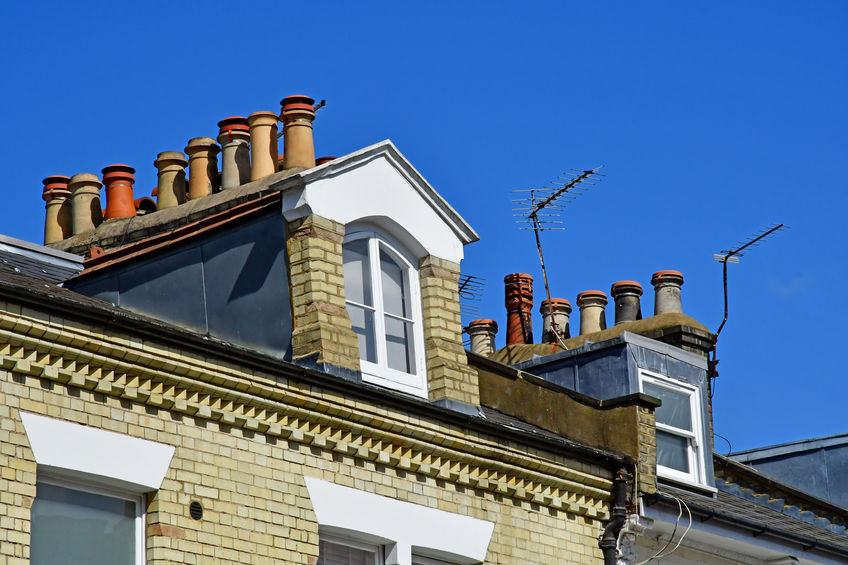RICS Valuer Inside Knowledge – About Gallows Brackets
by
A damaged chimney stack produces a less effective fire. It can leave you with a greater risk of unwanted fires starting, and of carbon monoxide poisoning. But the biggest danger of all is the risk of falling masonry, simply because an unstable chimney stack is an accident waiting to happen.
It’s never a good thing to discover. It’s surprising how often we come across chimney stacks that have been removed incorrectly. It’s important because an unsupported stack puts the entire property at great risk, in some cases affecting the homes next door as well.
Here’s what you need to know about Gallows Brackets, commonly used after chimney removal to support the remaining chimney stack or breast.
About chimney removal
One of the most common internal home alterations of all is taking out a ground floor chimney to make more floor space. It isn’t unusual to also remove the first-floor level chimney too, leaving only the roof void and the external chimney itself in place.
Building Regulations apply to this project because it’s a ‘material alteration’ to the structure. If you want to remove the entire chimney you must get professional advice about the structural impact, and you might need to get planning permission too.
The matter also frequently falls into the category of work under the Party Wall etc Act 1996, which means you have to serve notice to any adjacent properties so that the flues and other shared parts of the chimney can be taken into account.
What are Gallows Brackets?
Gallows Brackets have long been used to support built structures. The name comes from the shape, which looks very like an old-fashioned gallows where criminals were hung.
A Gallows Bracket is a right-angled steel support that keeps the remaining stack above it steady, usually installed at the party wall directly beneath the remaining part of the stack. The wall they are fixed to must be a minimum of 225mm thick and made from solid brickwork. The chimney breast should be no more than 340mm thick and both the bricks and mortar must be in good condition. As far as the height of the Gallows Bracket goes, it should be at least 1.5 times the height of the projection of the chimney breast itself.
The alternative is an RSJ, a Rolled Steel Beam giving support via suitable load-bearing walls, usually, those running perpendicular to the stack.
When Gallows Brackets are used
Gallows brackets are commonly used when the chimney stack isn’t 100% vertical, for example, a gathered flue leading to one central stack. They’re suitable when a neighbours’ chimney breast on the other side of the party wall hasn’t been taken out or is only partially removed, and when the party wall supporting the gallows bracket is a minimum of 215mm thick, in brickwork, and in good condition. It’s practical as long as the maximum width of the chimney breast is less than 1200mm, and for chimneys whose breast sticks out into the room no more than 340mm. It’s also a viable solution when a chimney is no more than two storeys high plus the roof space.
Gallows Brackets installation
You can’t simply remove a chimney breast without first getting building regulations approval for the removal itself plus the method of support you’re going to use.
The work might involve disturbing debris and dust from the adjoining owner’s chimney flue. You will probably need to use temporary protection at the neighbouring property during the works to prevent damage.
How many brackets you’ll need depends on the area of London the property happens to be in. Different councils have different requirements. Some local councils will ask you to fit three Gallows Brackets, others are happy with two.
Need help with chimney removal?
If you are considering removing your chimney breast and would like expert advice about it, as well as about the Party Wall etc Act 1996 in a chimney breast context, as a professional, highly experienced RICS valuer we’ll be delighted to help.

 +44 (0)20 3355 7909
+44 (0)20 3355 7909 professional@friendandfalckesurveyors.co.uk
professional@friendandfalckesurveyors.co.uk
